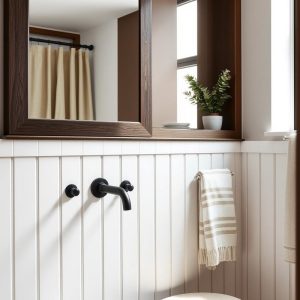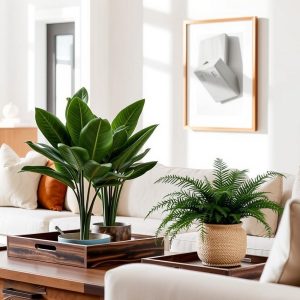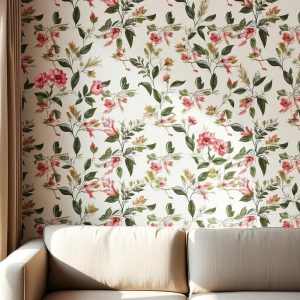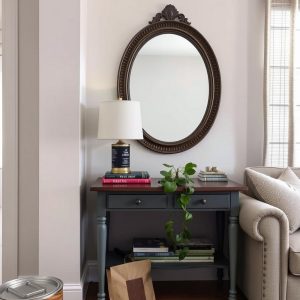Rococo Revival decor is all about romantic curves, gilded sparkle, and playful detail. It takes inspiration from the 18th-century Rococo style, which used shells, C- and S-scrolls, acanthus leaves, and flowers in a new way for parlors and drawing rooms in the 19th century. Mixing pastels, sculptural lines, and a little shimmer makes those patterns feel new today. The original Rococo style liked asymmetry and movement, and it filled walls and moldings with curves that crossed each other. You can pay homage to that at home with trim, mirrors, and lighting that looks light instead of heavy. The revival in the 19th century favored rich seating, marble-topped tables, and curving shapes that are great for modern living and dining rooms. This guide lists fifteen doable projects that will make your home look great on a budget.
These include gilded mirrors, scroll shelves, tufted upholstery, chinoiserie accents, and ormolu-style hardware. It also tries to keep things renter-friendly whenever possible. You can expect useful tools, clear lists of materials, and styling tips that keep things soft, feminine, and a little naughty. Start with one thing, like a pastel panelled wall or a crystal chandelier with candle sleeves. You could also stack several things to make a layered salon look, like a chair revived in damask or porcelain on S-curve shelves. The most important thing is to have contrast, like light colors next to shiny gold or delicate patterns next to soft textures. This will make every curve catch the light. These ideas bring the spirit of Rococo Revival to life in simple weekend projects that you can make your own, move around, and enjoy every day, no matter what your style is—grand millennial, cottage romantic, or quietly luxe.
1. Gilded Rocaille Mirror from a Thrift Find
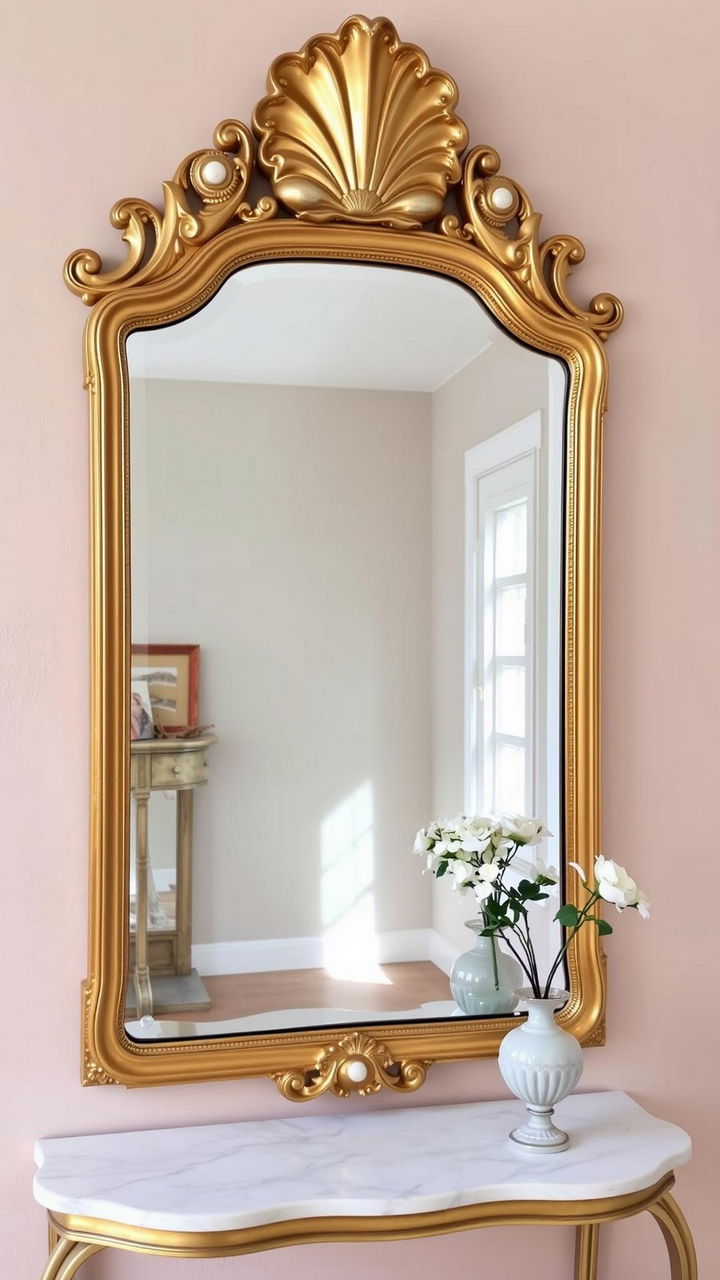
Look for a strong, used mirror with a frame that curves. Use wood filler to clean, lightly sand, and fix dings. To give your classic rocaille look some drama, glue on resin or wood appliqués like shells, C-scrolls, and acanthus at the top and corners. Put on a warm ochre base, then use metal-leaf adhesive (size) and lay down fake gold leaf. Gently burnish, seal with clear shellac or water-based poly, and then dry brush a little bit of brown glaze into the recesses to make the carving look deeper. To finish, hang the mirror across from a window to let in more light, which is a very Rococo thing to do. Shells and scrolling leaves are common decorations in this style, so a simple frame looks like it belongs in the past once it is gilded and decorated in an uneven way. To keep the vignette looking nice and not cluttered, add a slim console with a marble top and a bud vase.
2. Pastel Paneled Walls with Lightweight Mouldings
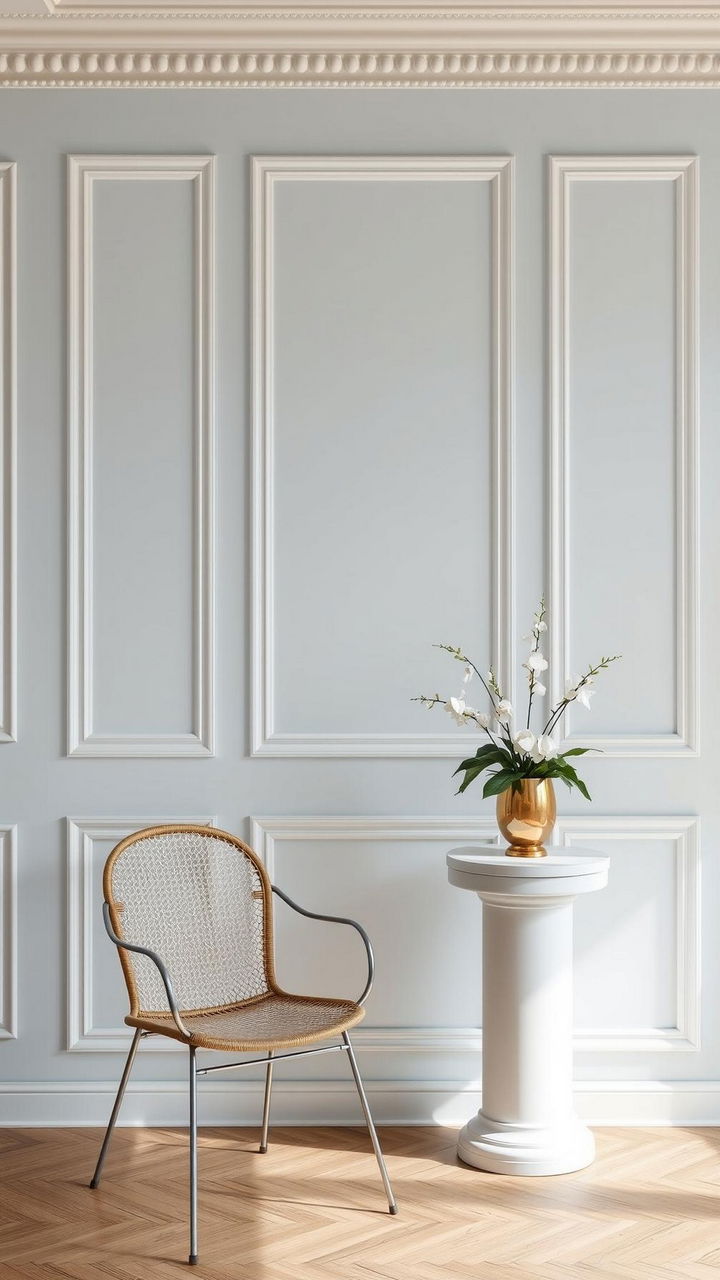
Make wall panels that look like salon boiserie without having to do a lot of carpentry. Use lightweight foam or PVC moldings that you can cut with a miter box. Then, use a level and painter’s tape to make rectangles and soft curves. Use construction adhesive to hold the panels together, caulk the seams, and roll on a satin pastel color like powder blue, blush, or pistachio, with bright white inside the panels. For a hint of luxury, rub metallic wax along the outside edges. Movement and interlacing curves on walls and ceilings are what give the Rococo look its style. Even a small entryway looks classy when the eye follows those lines. A light cane chair, a small pedestal, or a slim demilune will keep the panel work in the spotlight. If you rent, you can attach panels to thin sheets of plywood and lean them against the wall as art that can be moved.
3. Hand-Painted Chinoiserie Accent Panels
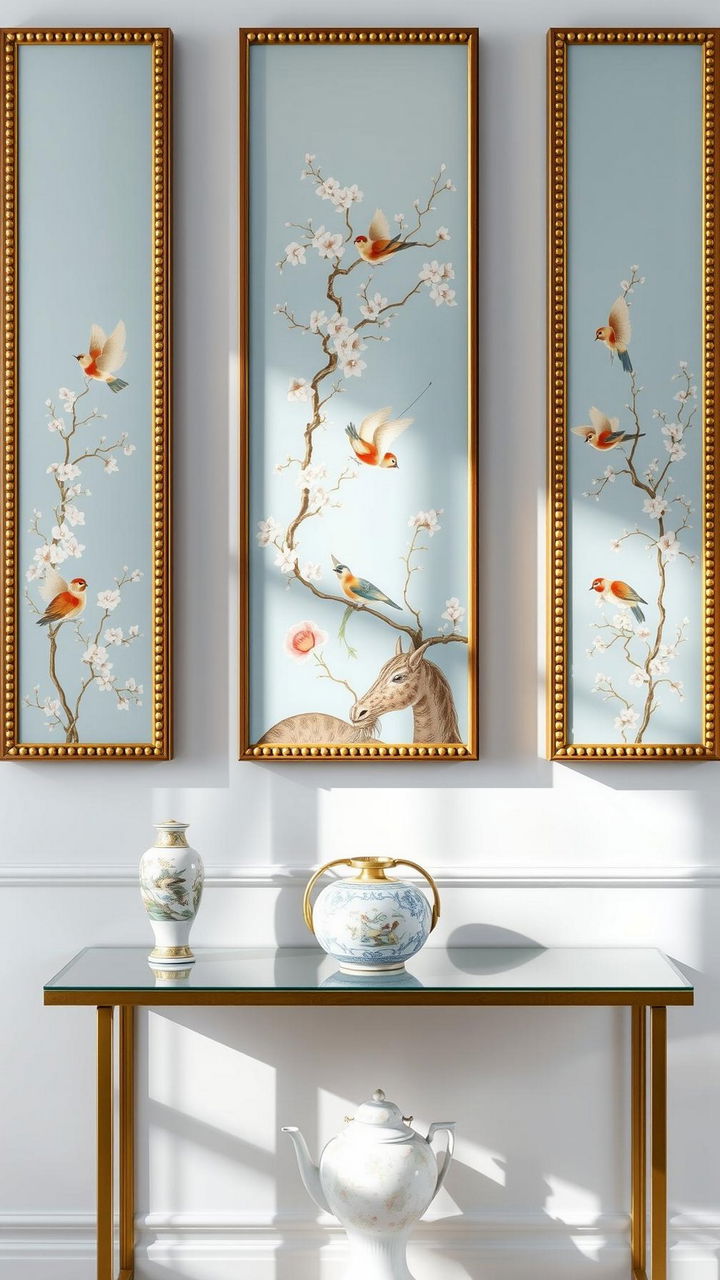
Use DIY chinoiserie panels to add a touch of 18th-century style. First, paint the MDF or canvas boards. Then, draw pagodas, flowering branches, birds, and fancy rocks. Use thinned acrylics to paint fine lines, and add a little metallic to the stamens and lanterns to make them stand out. Put thin gilt trim around the edges of the panels and hang them as a triptych over a console or sofa. Chinoiserie has always been linked to Rococo because of its unique, playful images and lively asymmetry. It looks great next to gilded mirrors and scrollwork. Pick a light misty color for the ground (duck-egg blue is a classic choice), and make the compositions light and airy so they look like windows opening into a garden. Use a matte varnish at the end to cut down on glare and keep the look of hand-painted. A single panel can add romance to a hallway or bedroom corner.
4. Tufted Damask Chair with Curvy Silhouette
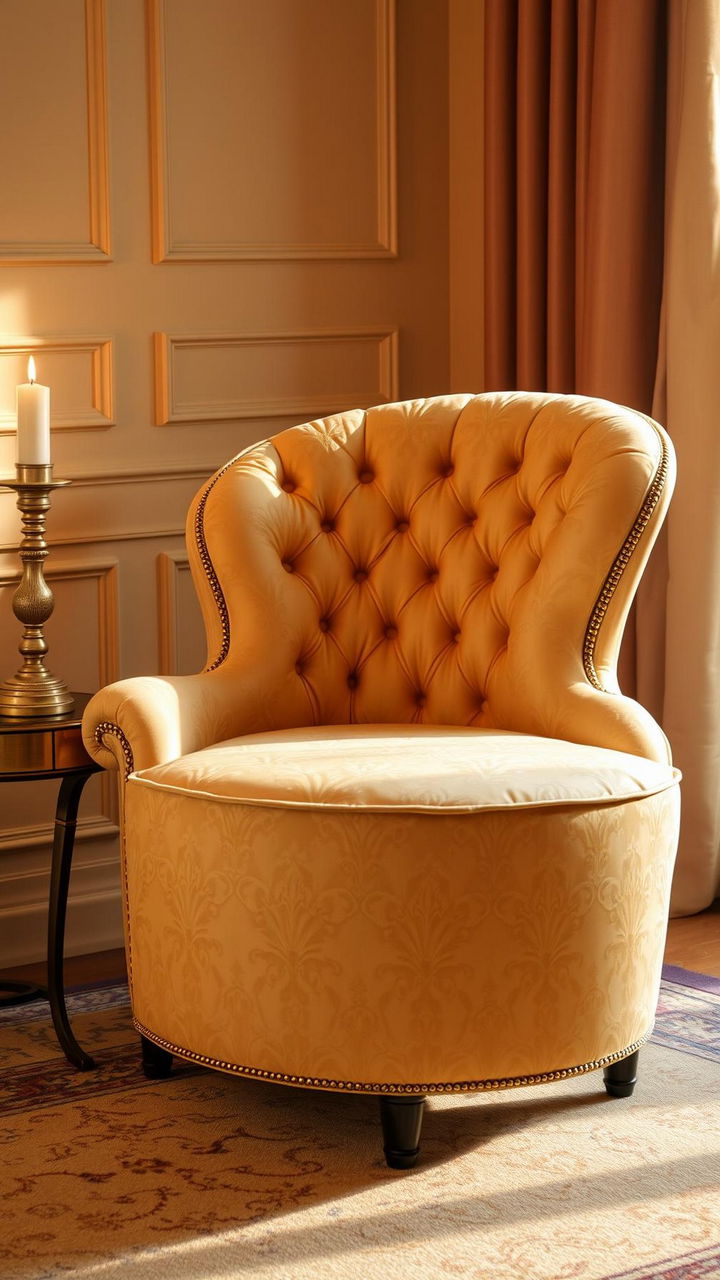
Get a curvy chair with a balloon back, a spoon back, or any other kind of rail that looks like a snake. Tighten the joints, paint or strip the frame, and only gild the edges and carvings so the wood can still be seen. Put a small damask or floral brocade on the seat and back again. Add deep-button tufting to the inset panel, but be careful not to pull too hard so that the pattern stays clear. Use double-welt cord in the same fabric to finish the seam. In the 1800s, Rococo Revival furniture was popular in parlors. Adding one tufted piece to a modern room brings back that softness without making it too much. Add a small side table and a candle lamp to your decor to give it a cozy, old-fashioned feel. If you’re new to upholstery, start with the seat. Once you’re more confident, move on to the back.
5. Cabriole-Leg Side Table Makeover with Marble Touch
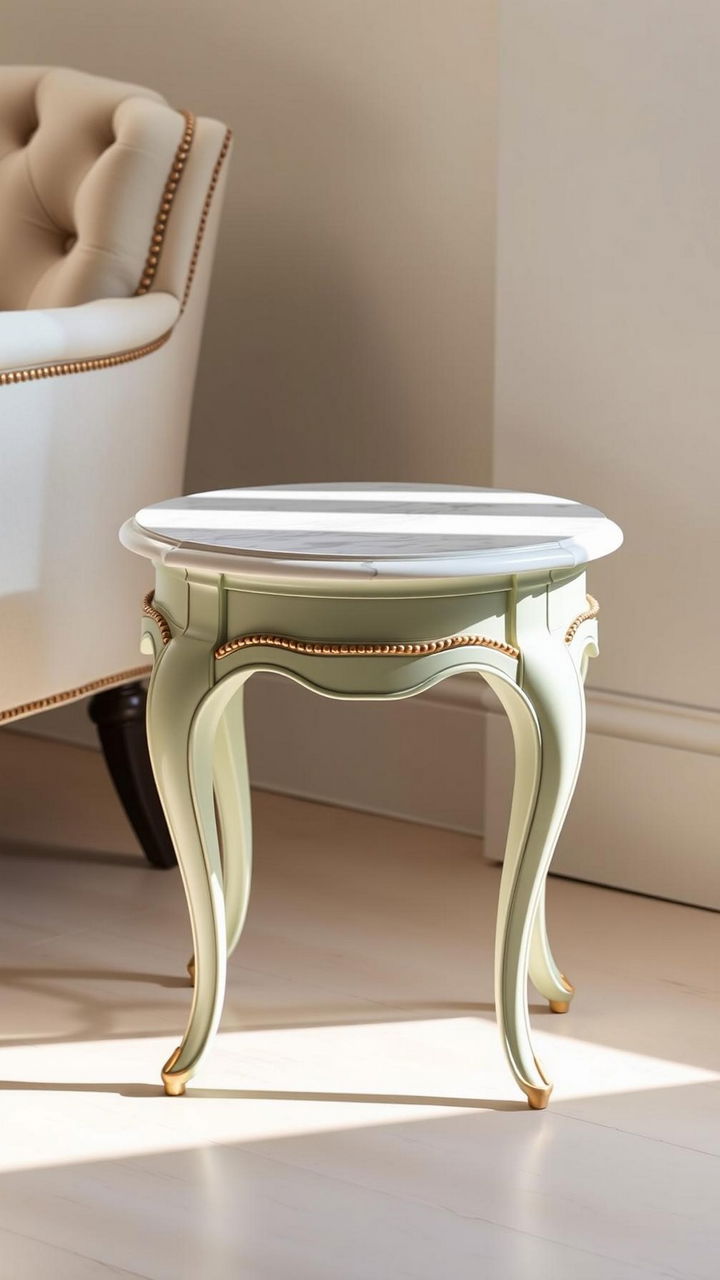
Find a small table with curvy aprons and cabriole legs. Sand down the scuffs, prime the surface, and paint it a warm white or pale pistachio color. Use real marble contact film or faux-paint veining with a feather over a pale gray base for the top, then seal it. Use metallic wax to gild the carvings on the knees and the edge bead for a soft glow. Cabriole legs, which are two curves that go in opposite directions, are a must-have for Rococo Revival silhouettes. Even a simple table from a thrift store will look “period” once the knees and toes are highlighted. Put it next to a tufted chair with a stack of poetry and a teacup. For extra charm, add a small tassel key to the drawer pull. The felt pads under the feet keep that graceful stance on both rugs and hard floors.
6. Gold Frame Gallery with C-Scrolls and Shell Corners
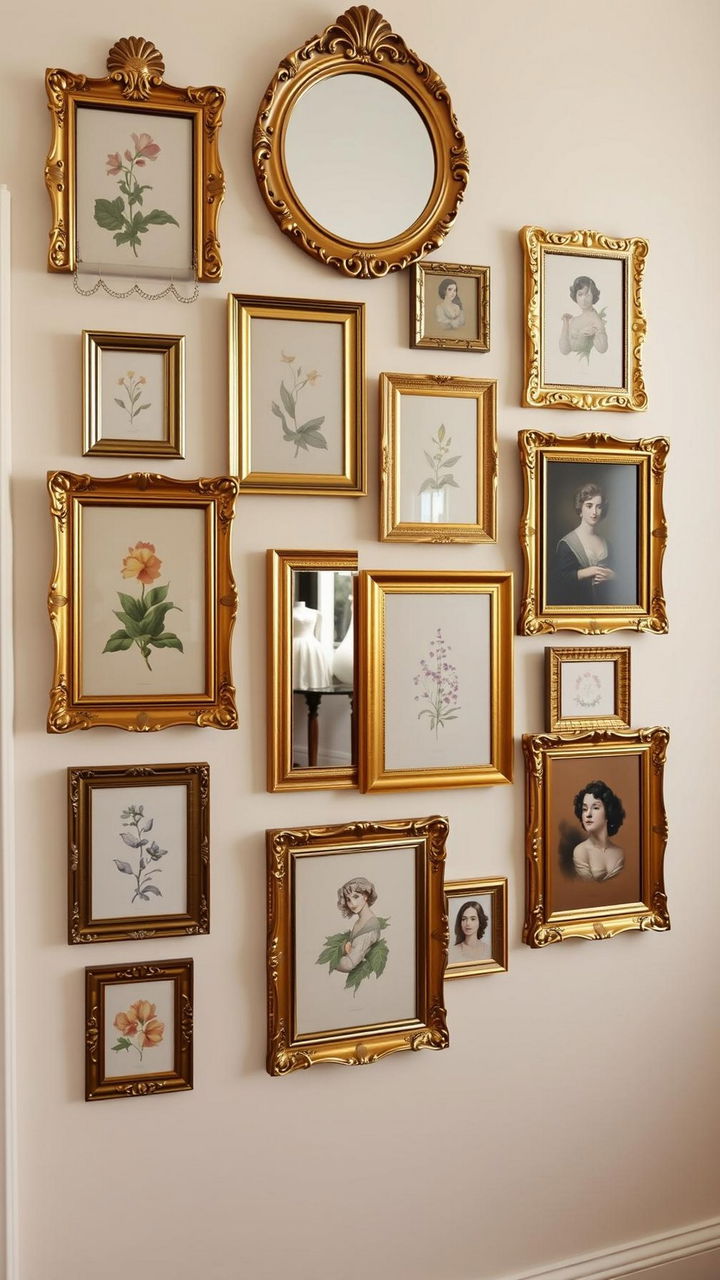
Get together some mismatched secondhand frames. Take out the glass, clean it, and glue on decorative corner appliqués like shells, C-scrolls, and leafy sprigs to make it look like there is movement around each opening. First, prime the surface, then spray or brush on metallic gold. Finally, use a thin brown glaze to tone the surface so that the details stand out. Choose art that fits the theme, like botanical engravings, fun pastoral scenes, small portraits, and quotes written in calligraphy. Instead of a grid, hang frames in a cloud that isn’t symmetrical. This will let the scrollwork “talk” to the spaces between the pieces. Add some sparkle by putting in one or two convex mirrors. This style captures the fun, uneven spirit of Rococo without needing a single original antique. It looks great on walls, hallways, and stair landings.
7. Acanthus-Adorned Dresser with “Ormolu” Paint Effects
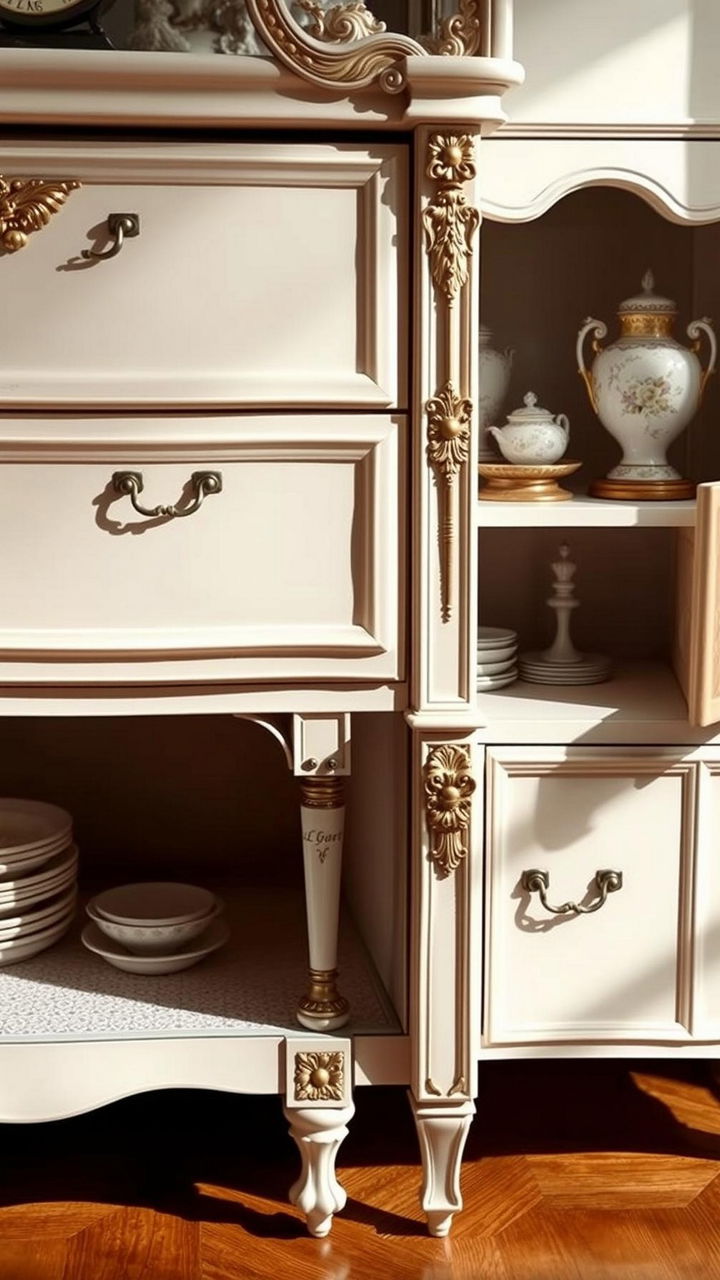
Make a plain dresser look like a salon piece. Add wood or resin acanthus, shells, and ribbons to the front of the drawers. Sand the edges smooth. Paint the whole case a light pastel color, then use a dry brush to paint the edges creamy white to make them look old. To make hardware and appliqués look like ormolu, which are gilt bronze mounts used on old furniture, add a thin layer of metallic paint, a little bit of gold leaf on the high points, and a whisper of brown wax. For a romantic touch, switch out the straight pulls for curved ones and add felt-backed key escutcheons. For a low, luxurious shine, finish with a satin topcoat. The end result is the festive sparkle of mounts without the chemicals or cost of real gilding. It also goes well with linen runners and porcelain.
8. Ceiling Medallion and Candle-Style Chandelier Refresh
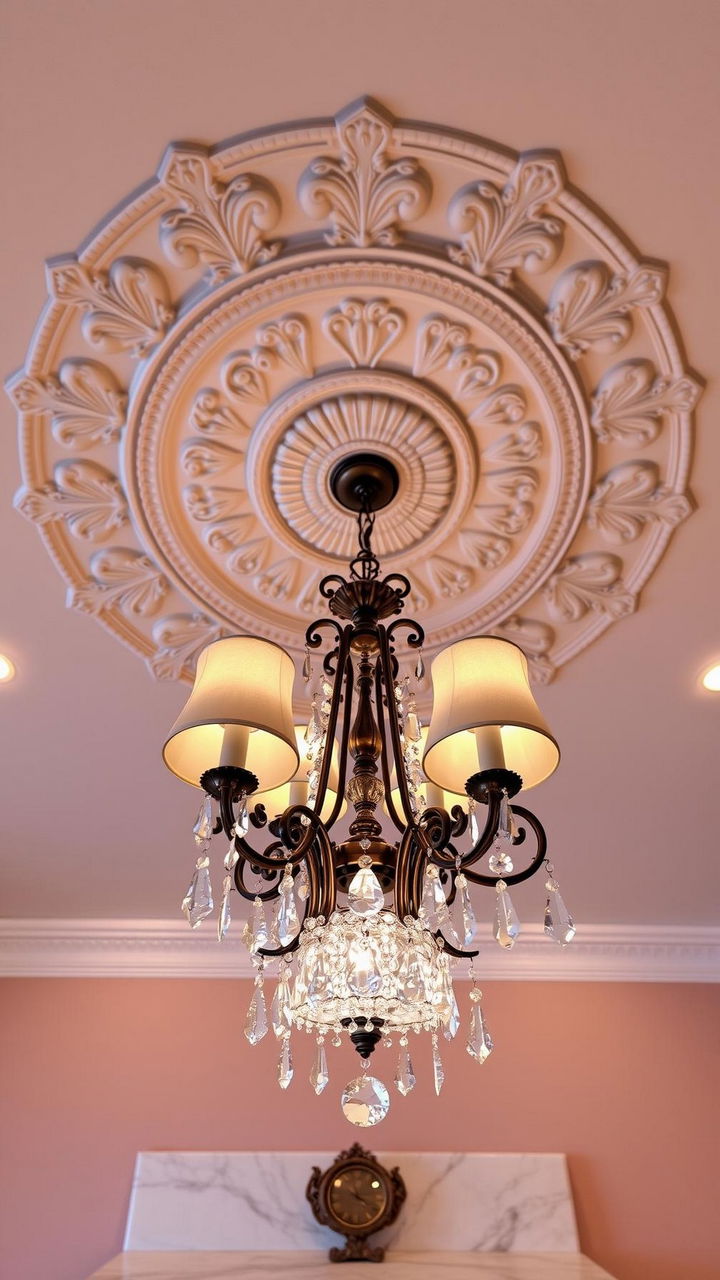
An afternoon is all it takes for a light foam medallion to change a ceiling. Paint it a soft white color and add a touch of gold to the raised scrolls. Then, put it around your existing canopy. Adding clip-on silk shades, candle sleeves, and cut-glass prisms from tiny hooks can make a simple chandelier look better. The overall effect—sparkle, curves, and delicate ornament—reminds me of Rococo rooms where light danced on gilded plaster and crystal. Make sure the chain covers are thin so the fixture doesn’t feel heavy. If hardwiring isn’t on the table, use a plug-in swag chandelier and center it over a table with a ceiling hook; you’ll still get that salon glow above a marble-topped sideboard or breakfast nook.
9. Scalloped, Tufted Headboard in Blush Velvet
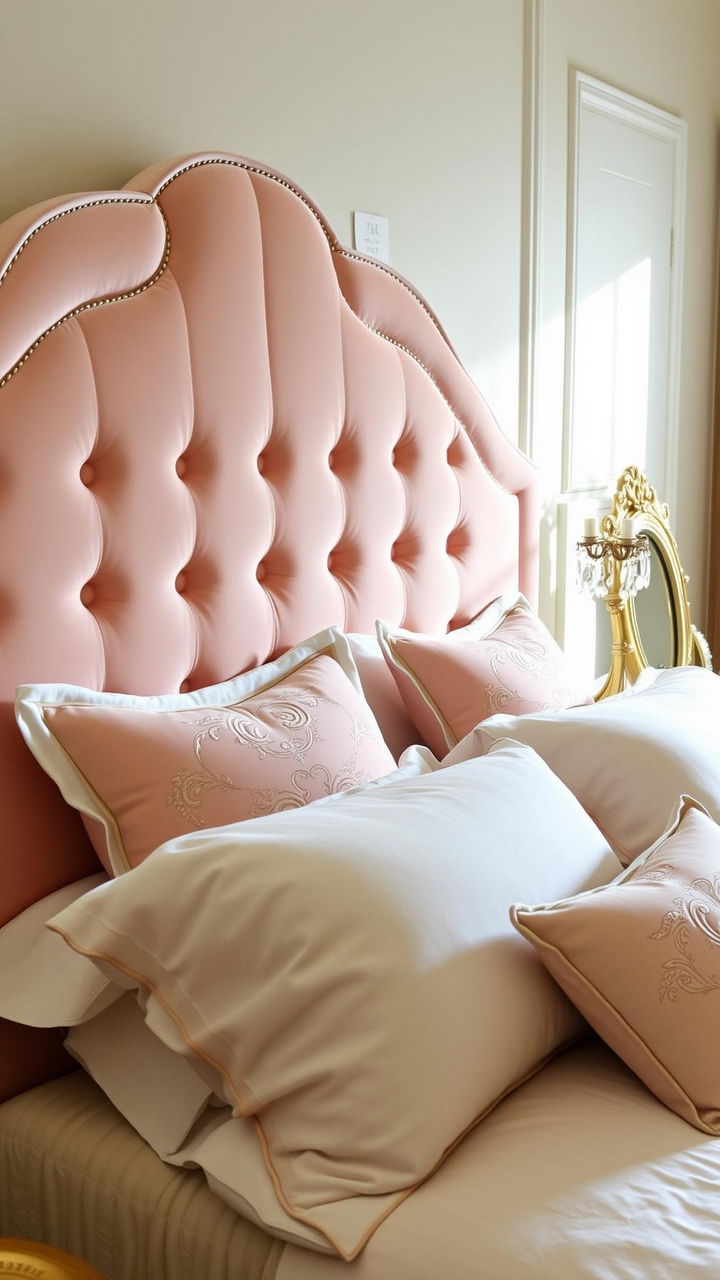
Draw a soft, uneven scallop on plywood (or foam insulation board if you want to make it easier for renters). Wrap in 2–3″ foam and batting, cut a diamond tufting template, and pull buttons through holes that have already been drilled. Put on some blush or celadon velvet and double-welt trim. Put the headboard a little wider than your mattress to make the curves stand out. Then, put embroidered shams on top of a delicate floral throw. A crystal sconce and a gilded mirror over the nightstand bring the romance of the parlor into the bedroom. The curvy, playful, and plush silhouette gives the room a Rococo Revival feel, even though the rest of the room is modern and simple. This makes it a great first project for people who are new to the style.
10. Curved Console with Gilded Edge and “Marble” Top
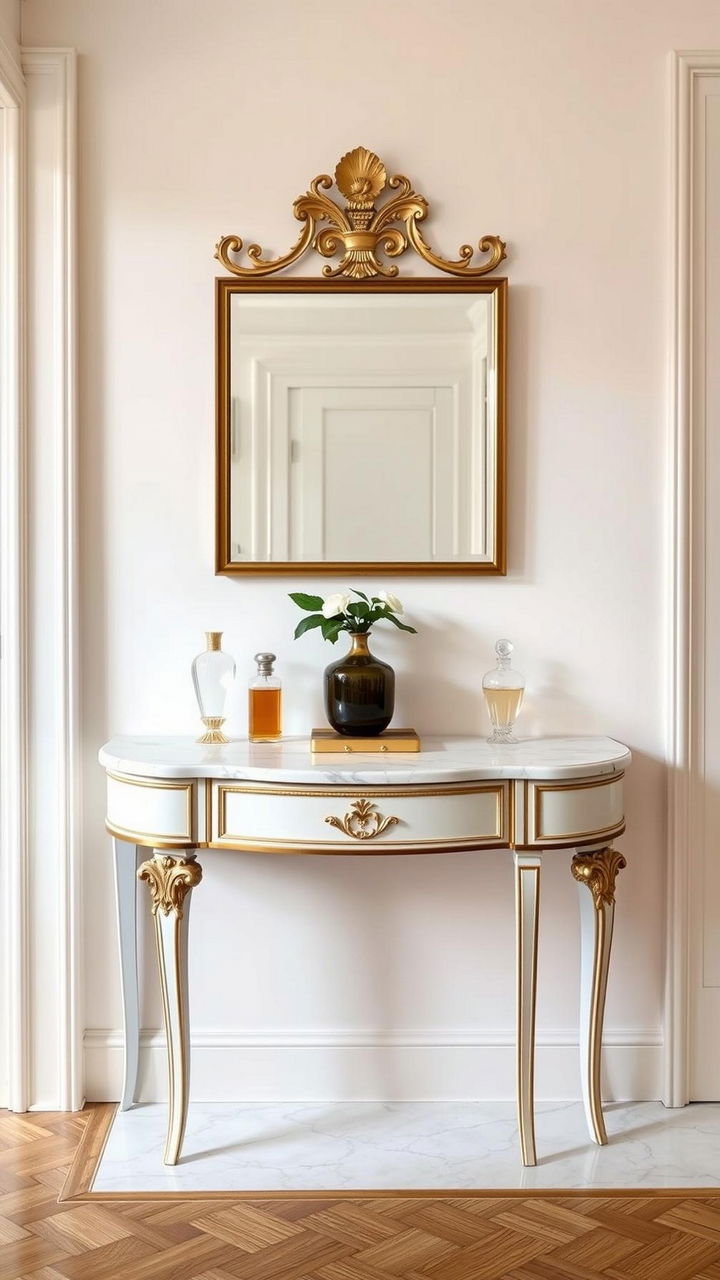
A thin demilune or serpentine console is the best base for Rococo art. Clean, prime, and paint the base a bright pastel color. Then, for a subtle gilded line, run metallic wax along the edges of the moldings and the carvings on the knees. Put a precut marble remnant on top, or use marble film and cut it with a sharp knife. Then warm the edges with a hair dryer to make a smooth wrap. Put a small ormolu-style gallery rail (or thin brass strip) along the back to keep perfume bottles or decanters in place. With a tufted ottoman tucked underneath and a small rocaille mirror above, the console can add just the right amount of glamour to an entryway, hallway, or dining nook.
11. S-Scroll Wall Shelves for Porcelain Displays
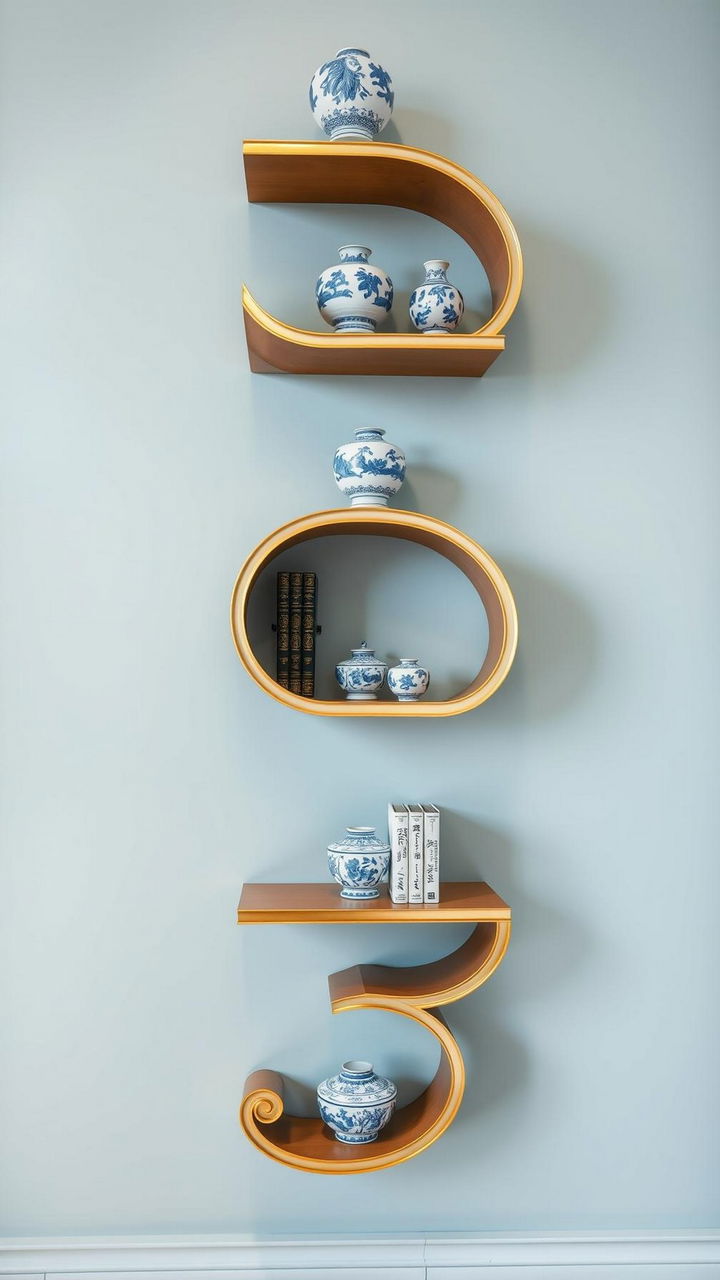
Use a printed template to cut out two S-curve brackets from ¾” plywood, then sand them smooth. Put screws into the wall studs, add a shelf with a curved front edge, and fill in the holes. Paint the unit the same color as the wall, then only gild the front edge and bracket tips so the shape is clear. S- and C-scrolls are classic Rococo lines. Making them into shelves adds function with style. You can put blue-and-white vases, figurines, or a stack of leather-bound books on these perches. To keep the space from feeling heavy and built-in, make sure the shelves are light and uneven, with two short shelves and one long one. If you collect teacups, put some small brass cup hooks under the bottom shelf to make a cute skirt.
12. Over-Door Floral Swag with Ribbons and Garlands
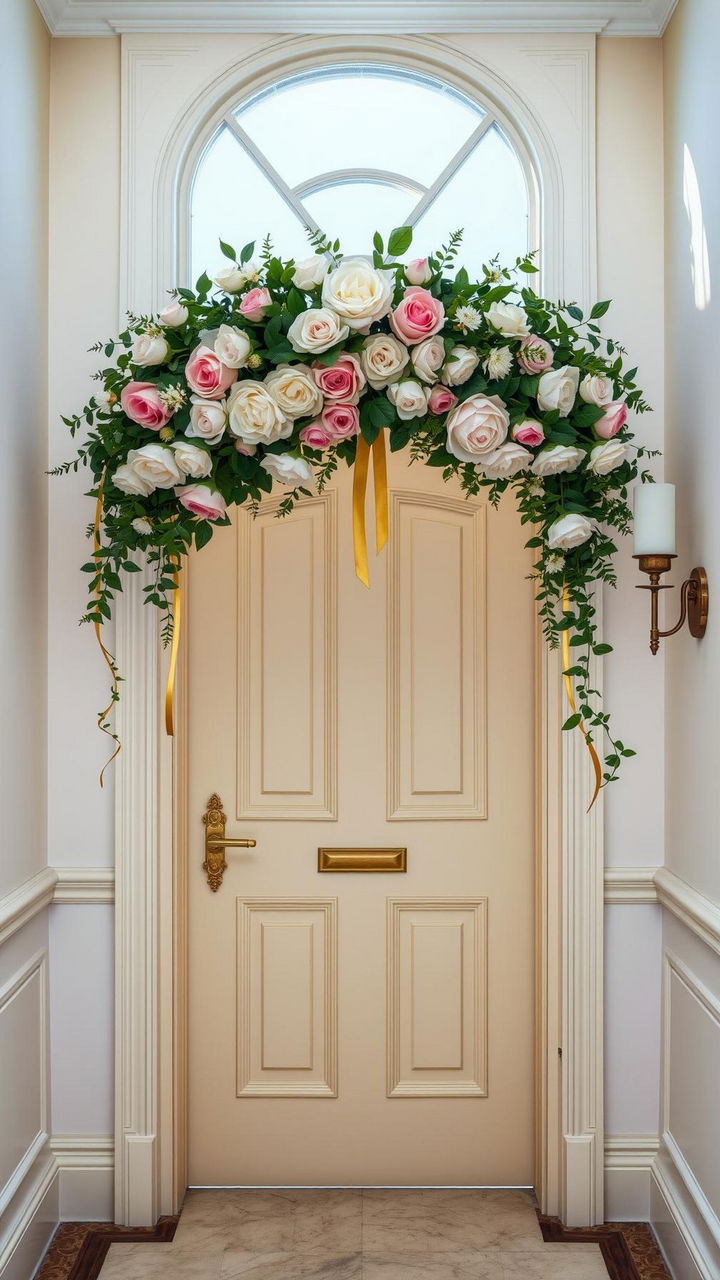
Use a grapevine base, fake roses, peonies, and trailing ivy to make a centerpiece that goes over the door. Wire the flowers tightly in the middle and let the greenery get thinner toward the ends. Put carved resin ribbons or wooden bows in the middle, and then use gilding wax to make the edges stand out. People loved swags and garlands in Rococo style. They were often hung over frames and cornices. Putting that rhythm above a door right away makes a room feel softer. Use small cup hooks and clear fishing line to hold it in place. For a cohesive look, pair it with a pastel door and a small wreath nail. It looks great on windows and mirrors, too. Think of it as jewelry for your building.
13. Toile Curtains with Tassel Tiebacks and a Scroll Pelmet
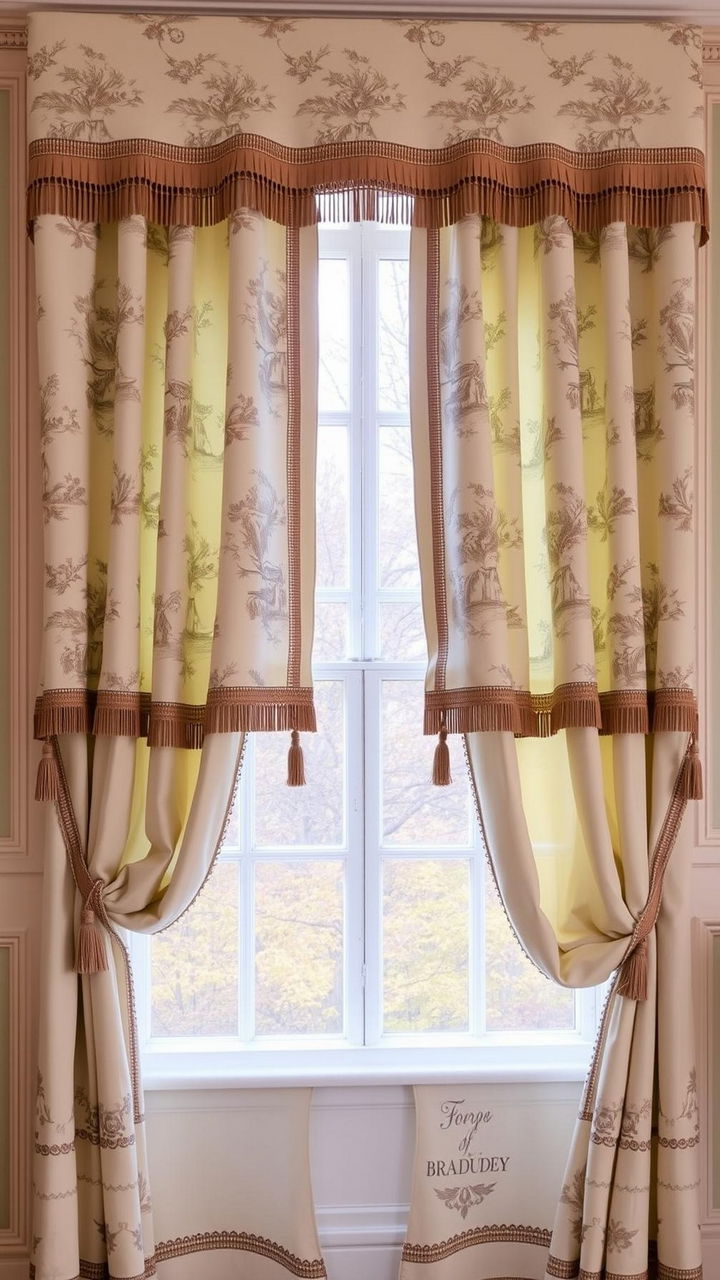
Use a classic pastoral toile or a small floral pattern to make simple rod-pocket curtains. Line them up so that the folds fall nicely. To give it a vintage look, add a narrow bullion fringe to the front and use tassel tiebacks to hold the drape up in the middle. Cut a lightweight pelmet (valance) out of foam board with a soft C-scroll shape. Cover it with fabric that matches and hang it above the rod. The layered look is similar to old windows, but it feels cozy, not fussy. Keep the hardware slim and a little warm in color so it goes well with the gold accents in other places. These curtains make your walls look like art, especially when they are painted pastel colors and have panels.
14. Curlicue Drawer Pulls with Easy Resin Casting
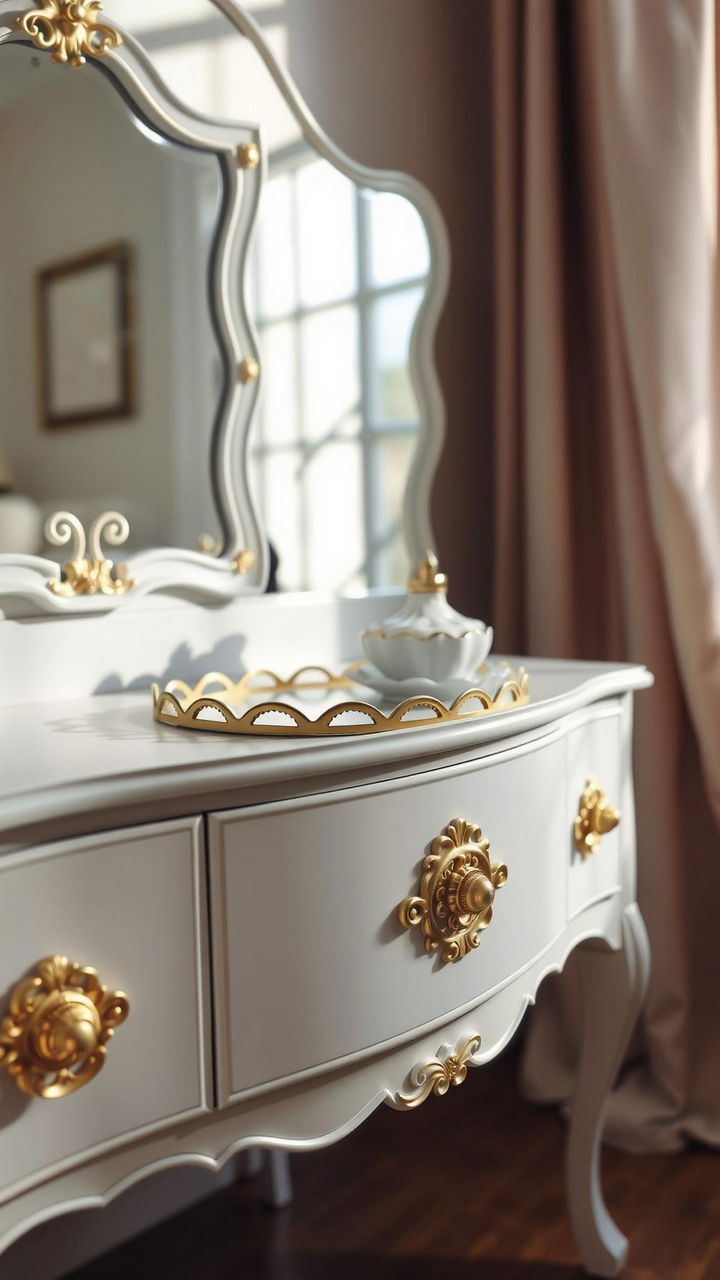
Use silicone molds and two-part resin to make curlicue backplates for plain furniture. Drill pilot holes once the paint has dried, stick the pieces together, and add layers of metallic paint with a touch of leaf on the highest points. For strength, put simple round knobs through the centers. This hack gives you the look of cast brass mounts without the cost or the trouble of finding them. Use a scalloped tray and a porcelain perfume bottle to match the curves on your vanity or commode. Keep the rest of the styling simple so that the very Rococo hardware line can be seen from across the room.
15. Painted Porcelain Vases with Decals and Gilded Rims
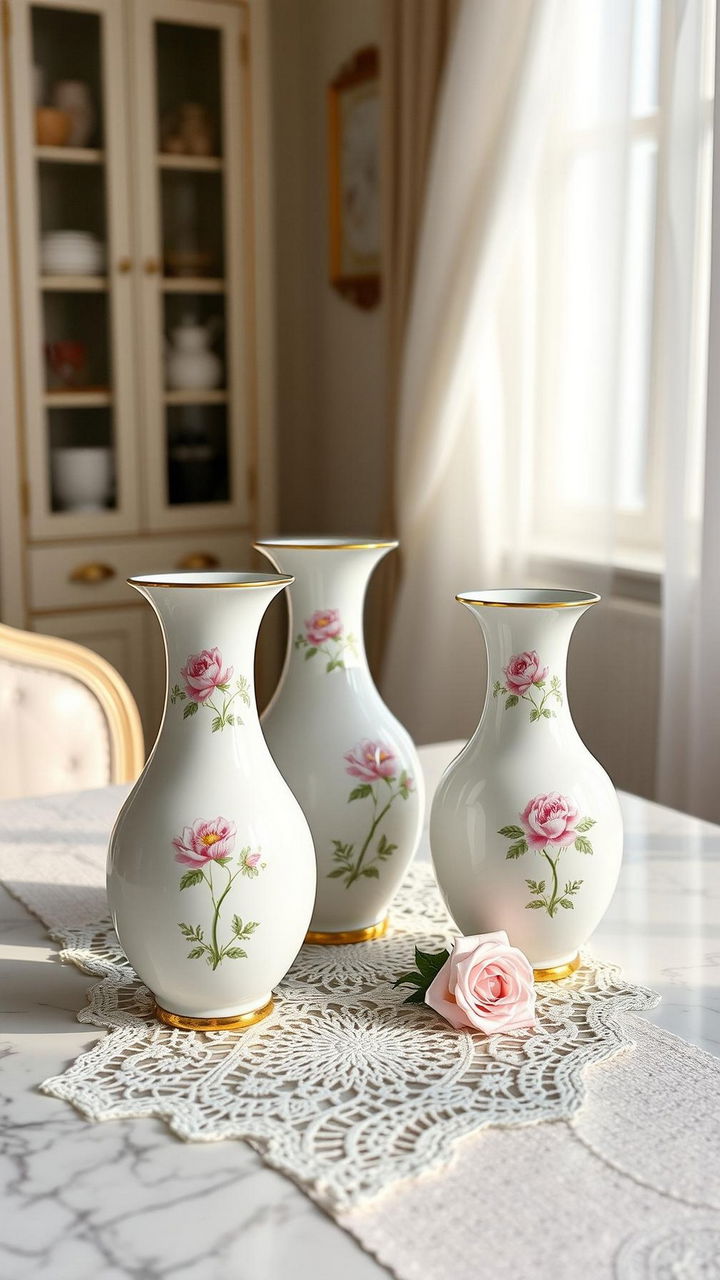
Begin with plain white ceramic vases. Put on waterslide decals of roses, ribbons, birds, and fun patterns. Smooth them out gently and let them dry according to the directions. To make the decals look like they belong, paint tiny stems and dots on them by hand. Then, brush liquid gold leaf along the base and rim. Follow the directions for baking or air-curing to make it last. Put three sizes together on a table with a marble top and a lace runner, or put one on an S-scroll shelf next to a gilded frame. The look is inspired by beautiful 18th-century porcelain, but it’s still easy to make and won’t break the bank. It’s perfect for gifts or as a centerpiece at a tea party.
Conclusion
Curves, lightness, and a touch of gold make Rococo Revival work. Pick one thing to start with, like a mirror, a pastel panel, or a tufted chair, and then add more things to make the room feel soft, bright, and lovingly layered. These projects keep costs low, personality high, and romance clear.

